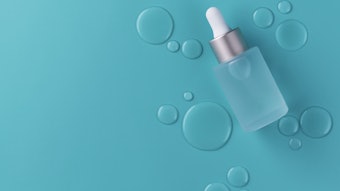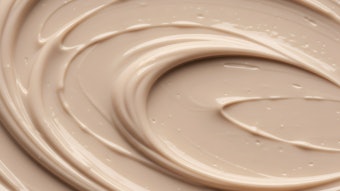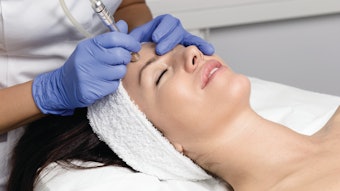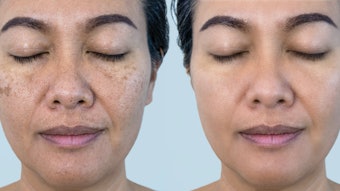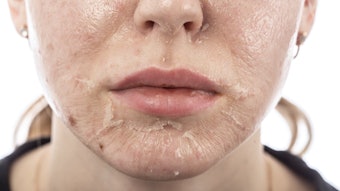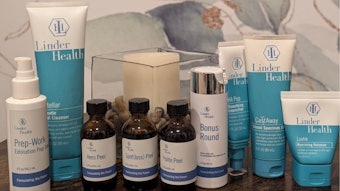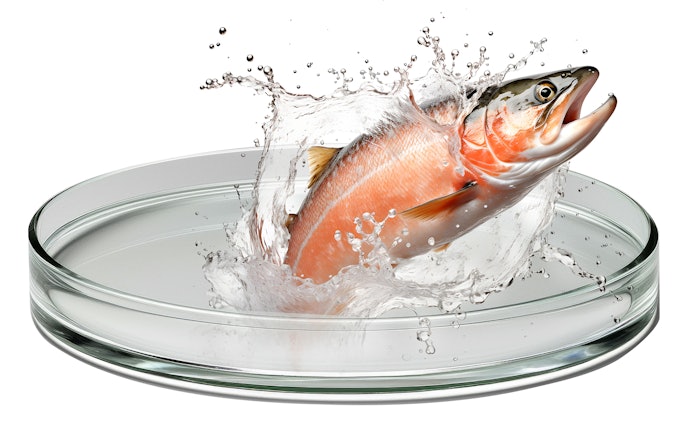
PDRN treatments are the latest to hit the skin care world, as seen on Jennifer Aniston and Kim K. More commonly (and perhaps scandalously) known as the salmon sperm facial, its well-aging properties come from the polynucleotides comprising salmon DNA specifically. This super-ingredient aggressively encourages skin regeneration and repair, making it ideal for reducing the appearance of scars, keeping skin hydrated and mitigating puffiness, fine lines and dark circles under the eyes. PDRN can be a topical treatment, injectable or used in mesotherapy treatments. One common PDRN treatment, Rejuran is rippling through the industry. "Rejuran is an innovative skin booster from South Korea and is revolutionizing regenerative aesthetic treatments,” says Rosy Sandhu, MD, founder of Neem Medical Spa in Boston. “Its key ingredient is PDRN (polydeoxyribonucleotide) which are DNA fragments from salmon and it works by releasing growth factors. [It] stimulates our skin to naturally repair, glow and regenerate. I recommend it to my patients who are looking for a smoother texture, a radiant luminosity to their complexion, for acne scars and even under eye rejuvenation of fine lines and wrinkles. We are using it in the US in conjunction with microneedling treatments for collagen stimulation, also to be infused using DEP or dermal electroporation which is a needle-free deep dermal infusion of PDRN and as topical skin care products. I recommend three to four monthly treatments with a maintenance treatment every six months. The fact that it's safe for all skin types with minimal to no downtime, makes it one of the most sought after treatments all year round."
Of course, there’s a lot more to PDRN than gathering a whole bunch of salmon….stuff and slathering it on someone’s face. As always, when a new hot ingredient hits the market, it’s important to find where it comes from, who can get it and what other things get kicked up by the industry in response.
Rejuvenation!...But At What Cost?
There’s one question that comes to mind when something finds Jennifer Aniston’s and Kim Kardashian’s hands before mine (which, to clarify, is most things): how much does this cost? I have no concept for how much this sort of thing is supposed to cost, after all, salmon are doing alright as a species...aren't they? Surely their…secret formula isn’t so coveted that the common man would have to take out a mortgage to support their facial. A quick Google search tells me that Kim K is rumored to have spent more than 20 grand on her pre-Met Gala skin regimen (at this point, I’ve started to sweat.) That isn’t limited to one facial, though. Further investigation (read: a second Google search) reveals that she at one point spent $1,500 on a vampire facial. Granted, this is a sum of money I can wrap my head around, but it’s still leagues above what most people are spending on facials, especially when it comes to repetitive treatments. One clinic I’ve found starts their PDRN treatments at $880, while another Texas-based spa keeps theirs at around $350. Whichever end of the spectrum you go to, it appears that people are willing to pay a pretty penny to reap the benefits of PDRN.
This makes sense though—when anything new hits the market, the rush to implement it makes distinguishing yourself to clients all the more competitive. Not to mention, competing for space while working within the limits of the natural bottlenecks that come with adding a completely new treatment to your menu. For one thing, spas looking to add PDRN to their menus will need to find reputable suppliers, a task that becomes more trying every year in an industry flooded with products. A trend still in its shiny-and-new phase only makes this all the more trying. It’s imperative when vetting suppliers, that spas get a fully-fleshed out contract (and read it, mind you) to the letter. In truth, having legal counsel go through it as well can’t hurt, just to ensure all your bases are covered and no potentially sticky language can bite you in the butt later.
Something else to take into account are the PDRN products popping up on the much less regulated consumer-side of things. Dupes are a contentious subject in this era of market fatigue and consumers pushing for higher standards of transparency. I suggest becoming familiar with common-place home PDRN products, so that you can better understand what clients may already be using on their skin, and make recommendations for those who want to keep up the PDRN care at home. Brands like Medicube have come out with their own PDRN lines that are accessible to the consumer. “I think it’s [Medicube’s Pink Peptide series] a great option for those looking to experience skin repairing and anti-aging benefits without the high price tag of in-spa PDRN treatments. While it’s not identical to clinical-grade PDRN, I do believe brands like Medicube are helping bridge the gap and make those types of results more accessible to everyday consumers,” says Arvika, a certified esthetician and digital creator based in Chicago.
There’s Plenty of Fish (and Other Stuff) in the Sea
Another thing to consider when deciding if PDRN is the right choice for your practice, is the source of the treatment itself. Sustainability is a growing part of most conversations these days, with our industries serving as a mirror, reflecting our impact on the ecosystems and changing climate. Sourcing fish for expensive facials does beg several questions: are there alternatives that will give us the same efficacy that traditional PDRN treatments do without using animals? If so, do we have a moral responsibility to use these alternatives, even if efficiency takes a hit?
As far as alternatives go, there is currently emerging research concerning microbial-derived PDRN, which explores the possibility of sourcing PDRN from the Lacticaseibacillus rhamnosus bacterium. If microbial-derived PDRN proves to be lucrative down the line, this would not only address sustainability issues, but it would also open up the possibility of year-round availability, so we would no longer be confined to the natural patterns that make up a salmon’s life cycle. This could mean the possibility of large-scale production, keeping this small corner of the industry stabilized and making the treatment more accessible in the long run, with resource scarcity being less of a factor. Currently though, this research just isn’t there yet.
There are some plant-based alternatives that come from ginseng, green tea and microalgae, but these haven’t proved to be as successful as salmon-based PDRN at their current stages.
For those still on the fence about PDRN, there are other treatments that provide similar benefits. One close alternative is PN, which can be derived from more than one source and stimulates collagen production. Using PRP in facials and microneedling can also have similar regenerative effects, although you’ll probably need to do this under the supervision of a licensed medical professional. Exosomes can also be used to get similar results.
For now, PDRN doesn’t seem to be going anywhere and research is already underway to find non-salmon related methods for sourcing it. In the meantime, you have some options—there are plenty of fish in the sea, as they say, and that applies whether you source from one or not.
